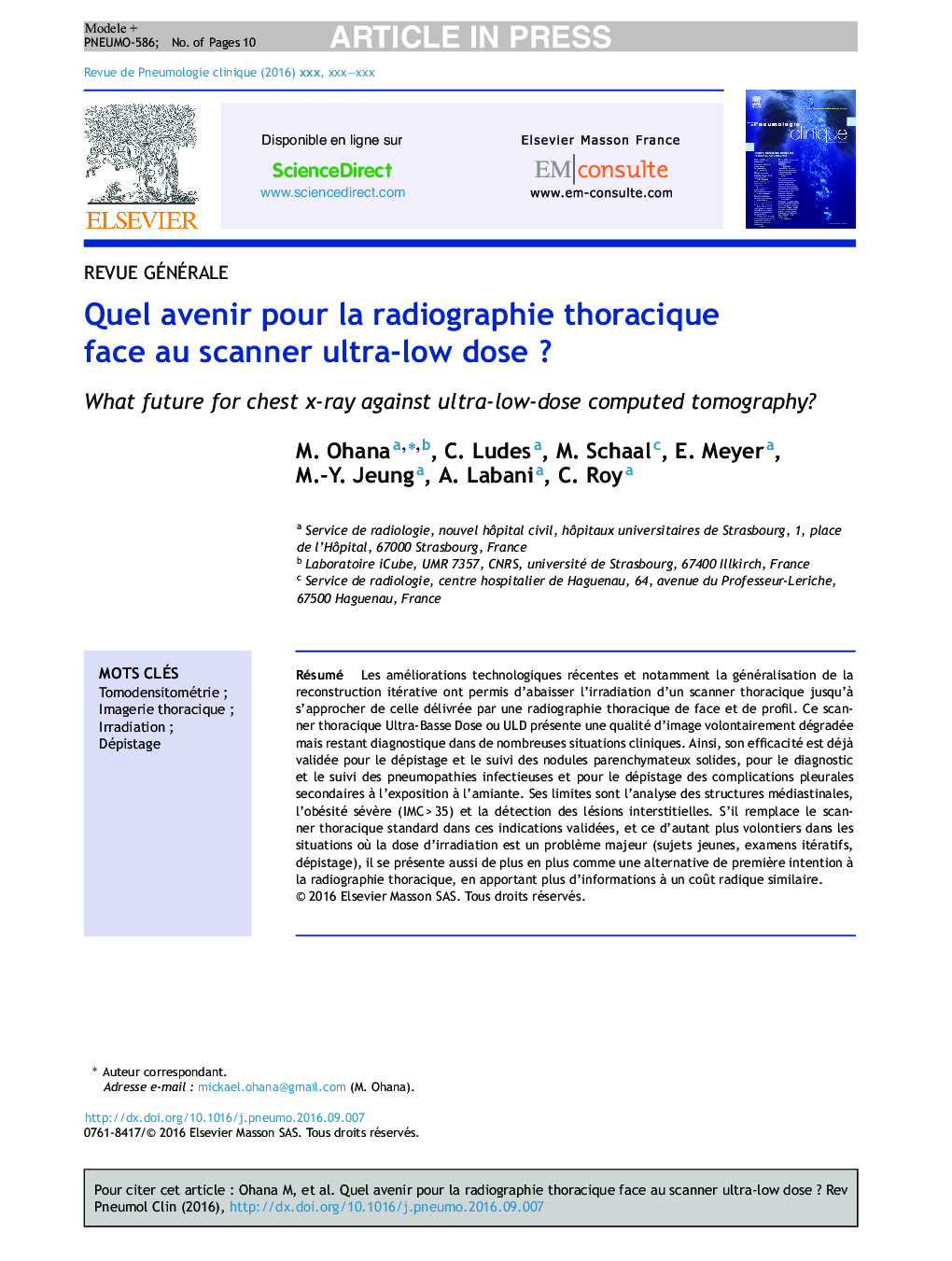| Article ID | Journal | Published Year | Pages | File Type |
|---|---|---|---|---|
| 5674476 | Revue de Pneumologie Clinique | 2017 | 10 Pages |
Abstract
Technological improvements, with iterative reconstruction at the foreground, have lowered the radiation dose of a chest CT close to that of a PA and lateral chest x-ray. This ultra-low dose chest CT (ULD-CT) has an image quality that is degraded on purpose, yet remains diagnostic in many clinical indications. Thus, its effectiveness is already validated for the detection and the monitoring of solid parenchymal nodules, for the diagnosis and monitoring of infectious lung diseases and for the screening of pleural lesions secondary to asbestos exposure. Its limitations are the analysis of the mediastinal structures, the severe obesity (BMIÂ >Â 35) and the detection of interstitial lesions. If it can replace the standard chest CT in these indications, all the more in situations where radiation dose is a major problem (young patients, repeated exams, screening), it progressively emerges as a first line alternative for chest radiograph, providing more data at a similar radiation cost.
Keywords
Related Topics
Health Sciences
Medicine and Dentistry
Infectious Diseases
Authors
M. Ohana, C. Ludes, M. Schaal, E. Meyer, M.-Y. Jeung, A. Labani, C. Roy,
